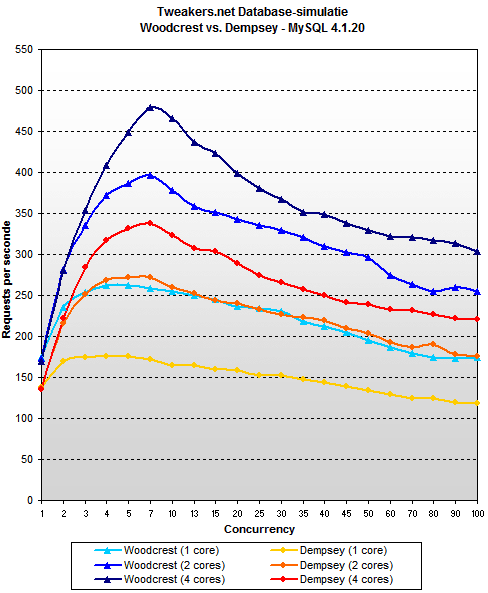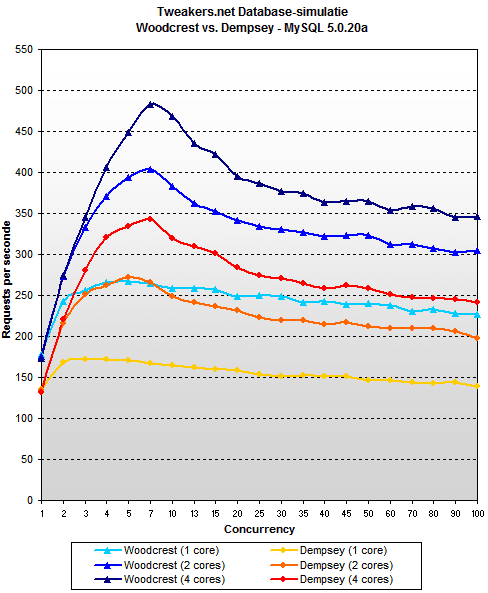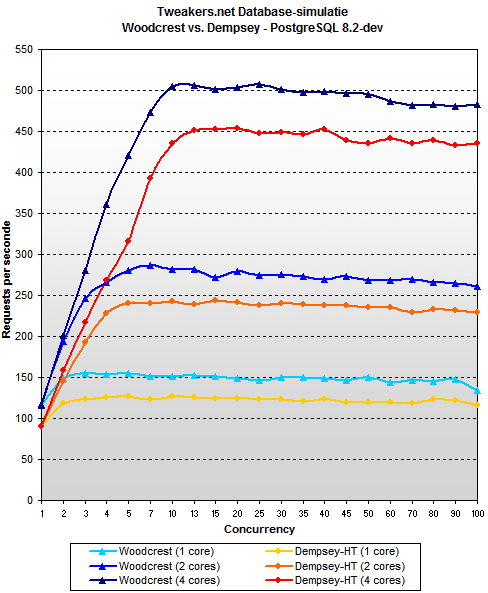With Blackford having established a solid basis in conjunction with Dempsey, it is time to take a look at the extras that Woodcrest can put into the equation. That turns out to be more than small potatoes: under heavy load it performs some 39% better in MySQL 4.1.20 and 42% better in MySQL 5.0.20a than the Dempsey. The battle is hardly fair anymore: two Woodcrest cores at 2.66GHz beat four Dempsey cores at 3,73GHz with one hand behind their backs. However, the scaling properties of the new architecture are a little disappointing, since the step from two to four cores raises the performance by only 15%. Although MySQL generally fails to scale up well, the Woodcrest is still, relatively speaking, on the slow side of the spectrum. This can possibly be remedied by using faster memory: with the Woodcrests we used the same 533MHz modules as with the Dempsey, while modules clocked at 667MHz would offer 25% more bandwidth, and, perhaps more importantly, run in sync with the 1333MHz bus.


In PostgreSQL Dempsey was already getting good results, and Woodcrest does not surpass that by a great amount. Still, the result is not bad, because in spite of the fact that Woodcrest lacks HyperThreading (which gave Dempsey an 8% advantage), it performs some 11% better on average. Moreover, the new Xeon has some extra headroom: our 2.66GHz version of the Woodcrest is not the top-of-the-line model, while the 3.73GHz Dempsey leads in both the price and the performance class of the Netburst line. Here too, faster memory might up the numbers some more.


:fill(white):strip_exif()/i/2000831982.jpeg?f=thumbmedium)
:fill(white):strip_exif()/i/2000831636.jpeg?f=thumbmedium)
:fill(white):strip_exif()/i/2000831669.jpeg?f=thumbmedium)